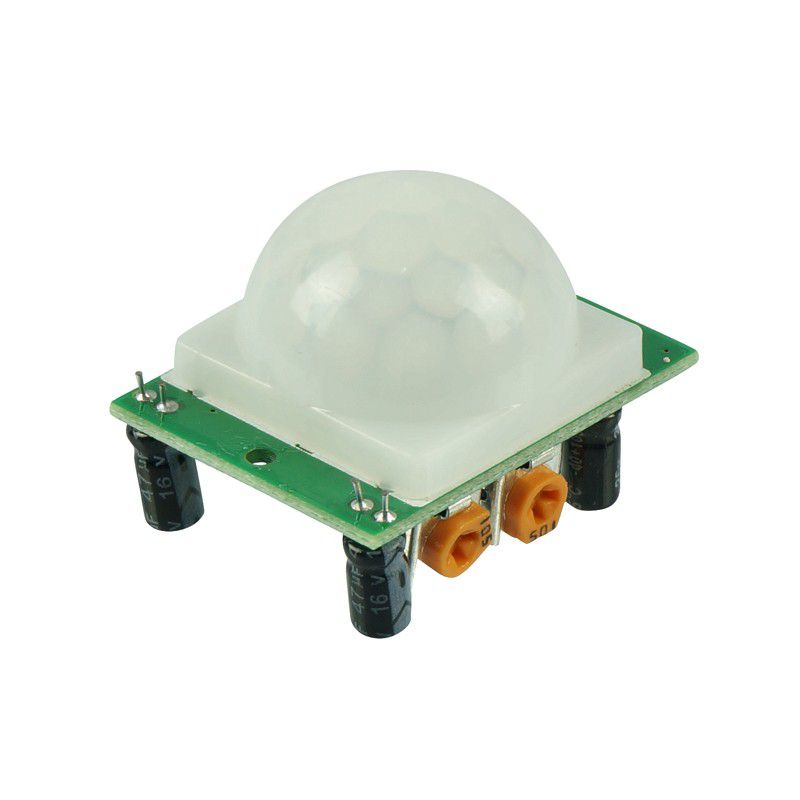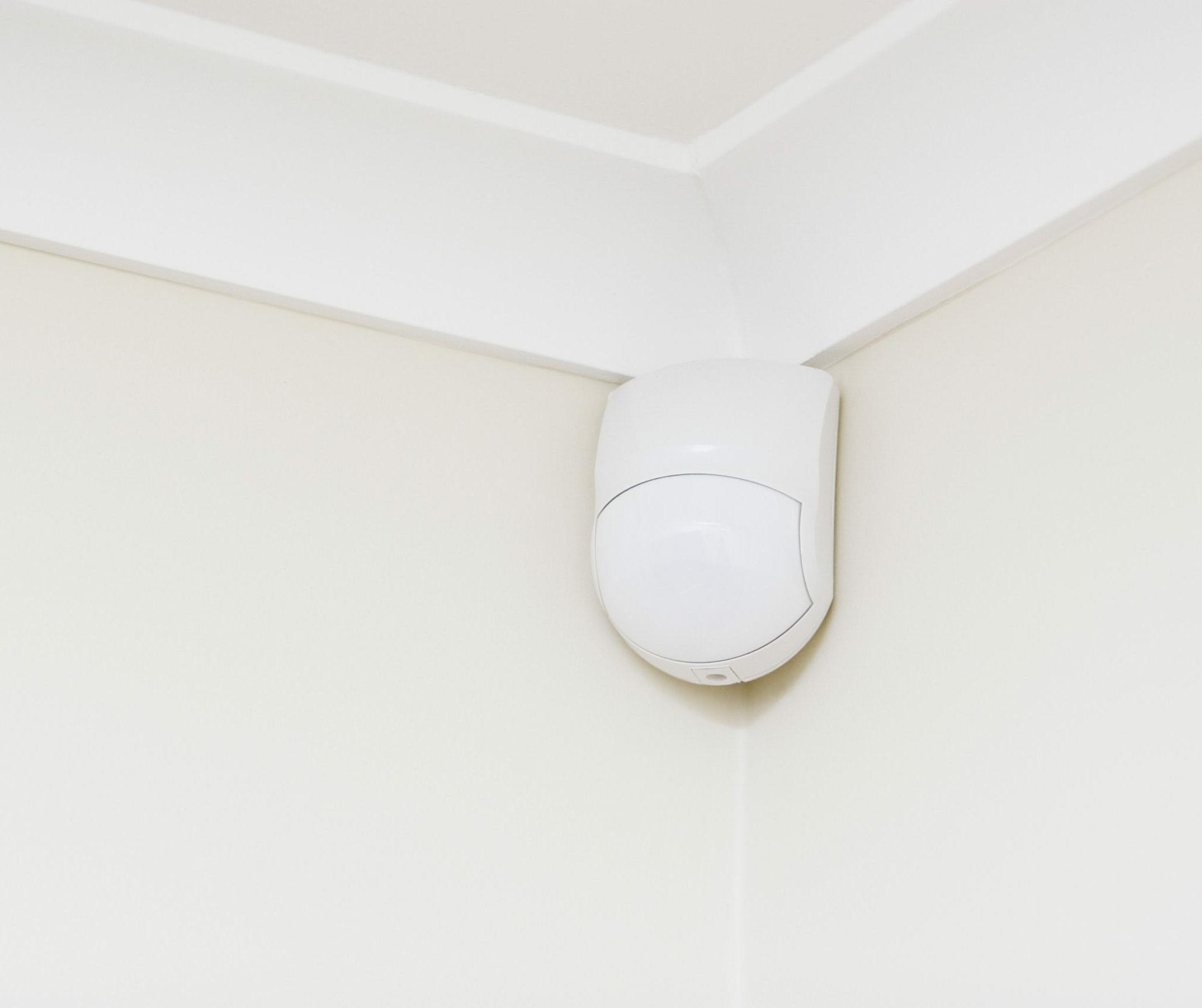Key Takeaways
- Passive infrared sensors (PIR sensors) are a longstanding motion detection technology, originating in the early 70s. experiments with radar and related technologies.
- Benefits of PIR sensors include their affordability, ease of installation and energy efficiency.
- Disadvantages of PIR sensors include their inaccuracy compared to intelligent sensing technologies (e.g., radar sensing or WiFi sensing), and their inability to detect fine-grained motion.
- Over time, it is likely that PIR sensors will become supplanted by newer motion detection technologies.
Passive infrared sensors (PIR sensors) are not just a theoretical concept; they are practical tools widely used in our devices and homes. With motion detection options available in the home, it is worth considering the benefits of PIR sensors and how they measure up against competing sensing technologies.
What is Infrared Radiation?
Any object with a temperature higher than absolute zero emits heat energy as electromagnetic radiation. This is not visible to the human eye, but we feel it near a hot object.
Infrared is on the same electromagnetic spectrum as visible light, which ranges from gamma rays and X-rays to microwaves and radio waves. It sits next to visible light on that spectrum, a wavelength humans can (at least sometimes) detect with their ordinary senses. As a form of ‘light’ that cannot be seen with the human eye, infrared is sometimes called ‘infrared light’.
In 1800, thermometer experiments by the Astronomer Sir William Herschel determined that infrared radiation is invisible radiation, lower in energy than red light. After Herschel’s studies, it was determined that more than half of the sun’s energy arrives on Earth in the form of infrared radiation.
From Infrared to Passive Infrared: PIR Sensors Defined
Motion detection using sensing electromagnetic radiation goes back to the earliest forms of radar in the 19th century: Physicist Heinrich Hertz recognized that electromagnetic waves bounced off objects and moved at different speeds.
In the early 70s, the first ‘infrared detection intrusion system‘ was patented by Herbert L Berman. This is the first example of a passive infrared (PIR) sensor: Motion is detected by sensing the change in the surrounding thermal radiation caused by movement. The sensors are ‘passive’ infrared as they do not ‘emit’ any thermal radiation themselves.

In its modern incarnation, PIR sensors operate via two pyroelectric sensors that sit within a plastic housing and detect the ambient heat energy. The sensors contain a crystal surface that generates an electric charge when exposed to ambient infrared radiation. When the quantity of radiation hitting the crystal changes, the electric charge is also picked up by a device built into the sensor.
The sensor surfaces themselves can be ‘tweaked’ to limit the detectable change in radiation to the 8 to 14mm range—the range most sensitive to human body radiation.
Depending on the setup of the PIR sensor, the change in electric charge detected in the sensor will trigger a certain event, such as an alarm sounding, turning on a light, or notifying the authorities.
These sensors can be ‘binary’—detecting only the presence or absence of movement—or they can be designed with sensitivity levels to detect the level of movement.
PIR can be contrasted with ‘active’ IR sensors. In an active sensor, an emitter sends infrared energy to a receiver. The default state is for the ‘beam’ to be received, indicating that nothing is blocking its path. Where the beam is interrupted, this indicates that motion is present.
What Are the Benefits of PIR Sensors?
PIR sensors are a long-standing mechanism for motion detection for good reason. They are:
- Affordable
PIR sensors are constructed of easily sourced materials and do not rely on sophisticated hardware. Indoor units can cost as little as $5-10. - Easy-to-install
Ready out of the box, generally professional installation is not required. - Energy-efficient
Due to the ‘passive’ nature of the PIR mechanism, little energy is consumed — around one watt-hour per day when on ‘standby’. For this reason, it is becoming increasingly common for PIR sensors to be powered by solar energy. - Privacy
As PIR sensors only detect changes in heat energy, no personal data is collected through motion detection.
What Are Some of the typical Applications of PIR sensors?
PIR sensors have a range of applications including:
- Automatically switching on lights
In addition to the added convenience, PIR-managed lighting can be part of efficient home energy management — no lights are left on unnecessarily. - Home security
As mentioned, PIR sensors can act as standalone intruder detectors or can be integrated with other home security technologies (for example, turning on surveillance cameras). - Thermostats and HVAC systems
PIR sensors can trigger these devices, further contributing to home energy efficiency.
What Are the Disadvantages of PIR Sensors?
Despite their benefits, there are some disadvantages to PIR sensors, which mean they may not always be appropriate:
- False positives
As mentioned, modern PIR sensors are usually sensitivity-adjusted to capture the best human motion rather than the wind or a tree branch. Nevertheless, by their nature, PIR sensors are ‘broad brush’ and cannot distinguish human motion from animal motion in the way that intelligent sensing solutions can. - False negatives
Movement can be ‘cloaked’ to avoid PIR detection (for example, using heat blankets). Similarly, glass or other physical barriers can prevent PIR sensors from working effectively. In addition, PIR is inaccurate regarding stationary objects and ones that move slowly. - Binary operation
PIR sensors detect the absence or presence of motion. They cannot analyze fine-grained motion in the way that radar or WiFi sensing solutions can. - Weather disturbances
The weather substantially affects PIR sensors and can be less effective in hot and humid weather, where ambient heat energy is closer to human temperatures.
Below, we consider how PIR measures against other standard motion detection/sensing technologies.
PIR Sensors vs Cameras
PIR and cameras are some of the more common motion detection technologies available. It is common for cameras to be fitted with PIR sensors to detect motion and ‘turn on’ the camera initially. Nevertheless, they are distinct ways of detecting motion (cameras can achieve this on their own through the application of pattern recognition software), and it is worth considering how they measure up against each other.
What PIR and cameras have in common is being ‘line of sight’ technologies: They both identify motion that is in front of the sensor but struggle to sense motion around it (such as around corners and behind walls).
Potential advantages of PIR sensors over cameras include:
- PIR is usually cheaper
Due to their technological simplicity, installing multiple PIR units is usually much cheaper than installing multiple high-quality cameras. - PIR works equally well in the dark
While camera technology can also be adapted for night usage, motion identification is still more difficult. This is not a problem for PIR sensors as they do not rely on visibility. - PIR protects the privacy of home occupants
PIR protects the privacy of home occupants by detecting changes in thermal energy only; it doesn’t collect personal data. By contrast, cameras detect and potentially record detailed information about anyone who walks in front of them.
On the other hand, potential disadvantages that PIR sensors can have compared to video cameras include:
- They are affected by temperature and weather
PIR can be less effective at high temperatures, as the difference between the ambient temperature and the body is relatively small. Cameras have no such problem. - PIR does not capture fine-grained data
PIR detects an individual’s presence, but it does not capture information about micro-movements in the way cameras with an appropriate machine-learning algorithm can.
PIR Sensors vs Radar Sensing
Radar sensing, like PIR and many other sensing technologies, interprets waves on the electromagnetic spectrum and how they are disrupted to detect movement. It transmits microwave signals in the direction of an object and then detects the radiation that is ‘backscattered’ from that object. You can read more about it here.
As with PIR, radar sensing:
- Protects the privacy of occupants
As only disturbances in electromagnetic radiation are detected, no personal information is collected or used. - Uses little energy
Depending on the complexity of the radar sensing equipment, both PIR and radar sensing use relatively little energy. Though radar sensing is an ‘active’ form of motion detection, it is usually used more.
Compared to radar sensing, PIR is:
- More affordable
Radar sensing generally requires multiple antennae and a more complex printed circuit board (PCB) to detect motion. - Simple to install
While the technology is increasingly user-friendly, radar sensing requires professional installation.
On the other hand:
- PIR is less accurate than radar sensing
Radar sensing can pick up micro-movements that PIR will miss, distinguish different animal types, and is not substantially affected by the weather. - PIR is line-of-sight only
Radar sensing can detect motion around corners and through walls.
PIR Sensors vs WiFi Sensing
WiFi sensing uses the power of local wireless networks (i.e., ‘WiFi’) to detect motion. This has applications for home security, sustainable energy use, and monitoring vulnerable family members. As with PIR sensors, WiFi sensing is:
- Affordable
Using similar technology to existing WiFi devices, WiFi sensing does not require expensive hardware. - Respectful of occupant privacy
No personal data is necessary for WiFi sensing to function. - Easy-to-install
WiFi sensing solutions are often available in ‘plug and play’ hardware without the need to hire professionals.
However, there are a range of ways in which PIR sensors are less effective than WiFi sensing:
- False positives
WiFi sensing can filter out non-human movement, such as pets. However, most PIR sensors are unable to eliminate these false positives. - Coverage
WiFi sensing can cover larger areas than PIR sensors.
Conclusion
PIR sensors detect the difference between ambient heat energy and the heat energy generated by objects to detect motion. They are affordable, straightforward, and have an established history as a motion detection technology. However, PIR lacks the accuracy of newer sensing technologies, such as radar and WiFi, and is therefore likely to be replaced by ‘Sensing 2.0‘ technologies over time.
FAQ
Passive infrared (PIR) sensors detect motion by sensing the difference between ambient heat energy in a location, and the heat energy when a moving object has entered into that space.
PIR sensors are passive, which means they do not emit infrared waves themselves, but instead sense changes in the surrounding thermal energy. By contrast, active infrared sensors emit infrared waves and interpret the way in which those waves ‘bounce’ off moving objects.





